News
EPJ D Topical review - Recent total cross section measurements in electron scattering from molecules
- Details
- Published on 05 May 2020

Accurate new experimental data on electron interactions with matter are necessary for the understanding of a wide variety of natural and technological processes occurring in complex environments. Knowledge of the efficiency of electron interactions with biomolecules is crucial for the description and modeling of ionizing radiation damage to living cells and biomolecules radiolysis. Accurate experimental data concerning electron interactions are also important for the description of many phenomena occurring in plasma physics and gaseous electronics, including modeling of processes in cometary and planetary atmospheres.
EPJ Plus Highlight - Mathematical curves predict evolution in Covid-19 spread
- Details
- Published on 23 April 2020
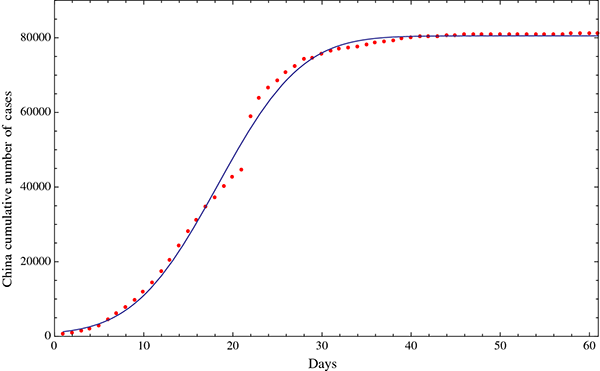
With the right approach, statistics can be used to reliably track the growth and fall in daily new cases of Covid-19 in China, raising hopes that similar approaches could more accurately predict the spread of the virus in other nations.
Efforts to contain the spread of the Covid-19 pandemic are now the top priority of governments across the globe. As they make these life-saving decisions, it is particularly crucial for policymakers to accurately predict how the spread of the virus will change over time. Through research published in EPJ Plus, Ignazio Ciufolini at the University of Salento, and Antonio Paolozzi at Sapienza University of Rome, identify a clear mathematical trend in the evolution of daily new cases and death numbers in China, and use the same curve to predict how a similar slowdown will unfold in Italy.
EPJ B Colloquium - Ergodicity and large deviations in physical systems with stochastic dynamics
- Details
- Published on 22 April 2020

In ergodic physical systems, time-averaged quantities converge (for large times) to their ensemble-averaged values. Large deviation theory describes rare events where these time averages differ significantly from the corresponding ensemble averages. It allows estimation of the probabilities of these events, and their mechanisms, and has been applied to a wide range of physical systems, including exclusion processes, glassy materials, models of heat transport, proteins, climate models, and non-equilibrium quantum systems.
EPJ B Highlight - What protects minority languages from extinction?
- Details
- Published on 21 April 2020

Mathematical modelling of competing languages in a geographical area suggests two scenarios in which one or more minority languages will be more likely to survive.
Over 6,000 languages are currently spoken worldwide, but a substantial minority - well over 5% - are in danger of dying out. It is perhaps surprising that this fraction is no higher, as most models have so far predicted that a minority language will be doomed to extinction once contacts with speakers of the majority language reach a certain level. Statistical physicists Jean-Marc Luck from Université Paris-Saclay, Paris, France and Anita Mehta from the University of Oxford, UK have described, using mathematical modelling, two mechanisms through which this doomsday scenario does not occur, i.e. several languages come to coexist in the same area. This work is now published in EPJ B.
EPJ E Highlight - Modelling wrinkling and buckling in materials that form the basis of flexible electronics
- Details
- Published on 20 April 2020
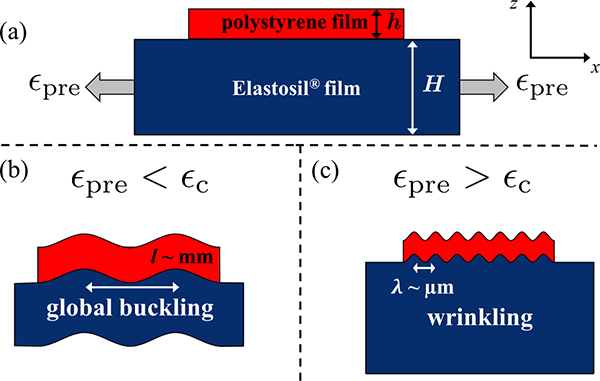
As the demand for flexible electronics grows, researchers must develop robust models of how the materials that comprise them behave under stress.
Flexible circuits have become a highly desirable commodity in modern technology, with applications in biotechnology, electronics, monitors and screens, being of particular importance. A new paper authored by John F. Niven, Department of Physics & Astronomy, McMaster University, Hamilton, Ontario, published in EPJ E, aims to understand how materials used in flexible electronics behave under stress and strain, particularly, how they wrinkle and buckle.
EPJ D Highlight - Questionable stability of dissipative topological models for classical and quantum systems
- Details
- Published on 15 April 2020

Physicists Rebekka Koch and Jan Carl Budich make important contributions to understanding dissipative topological systems by studying the spectral instabilities that occur in the mathematical description and their effect on experimental setups in a new paper in EPJ D.
Energy conservation lies at the core of every physical theory. Effective mathematical models however can feature energy gain and/or loss and thus break the energy conservation law by only capturing the physics of a subsystem. As a result, the Hamiltonian, the function that describes the system's energy, loses an important mathematical property: it is no longer Hermitian. Such non-Hermitian Hamiltonians have successfully described experimental setups for both classical problems – in e.g. some optical systems and electrical circuits - and quantum ones, in modelling the motion of electrons in crystalline solids. In a new paper in EPJ D, physicists Rebekka Koch from the University of Amsterdam in the Netherlands and Jan Carl Budich from Technische Universität Dresden, in Germany, describe how these functions provide new insights into behaviour at the edges of topological materials.
Libor Juha joins the EPJ Scientific Advisory Committee (SAC)
- Details
- Published on 08 April 2020
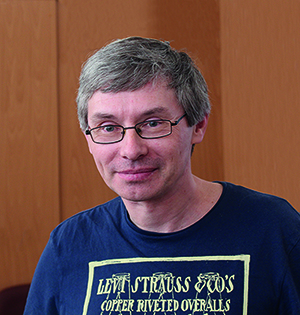
The Scientific Advisory Committee of EPJ is delighted to welcome Dr. Libor Juha as the new representative for the Czech Physical Society.
Libor Juha obtained his Ph.D. degree at the Faculty of Nuclear Sciences and Engineering Physics of the Czech Technical University in Prague in June 1995. He is the head of the Department of Radiation and Chemical Physics of the Institute of Physics of the Czech Academy of Sciences and the scientific director of the PALS (Prague Asterix Laser System) Research Centre, the joint laboratory between the Institute of Physics and the Institute of Plasma Physics of the Czech Academy of Sciences. He performs experimental investigations of various phenomena occurring on the border between the high-energy-density physics and the high-energy chemistry. His main current research activities are associated with a characterization and applications of XUV/x-ray lasers of various kinds. In addition to that, he is lecturing at the Faculty of Nuclear Sciences and Engineering Physics of the Czech Technical University in Prague and the Faculty of Mathematics and Physics of Charles University in Prague. He spent ten years (2008-2017) in the service to communities of Czech and Slovak physicists as the editor-in-chief of the Czecho-Slovak Journal of Physics - Československý časopis pro fyziku, one among several successors to the Journal for Cultivation of Mathematics and Physics - Časopis pro pěstování mathematiky a fysiky founded in Prague in 1872.
EPJ D Highlight - Looking for dark matter
- Details
- Published on 08 April 2020
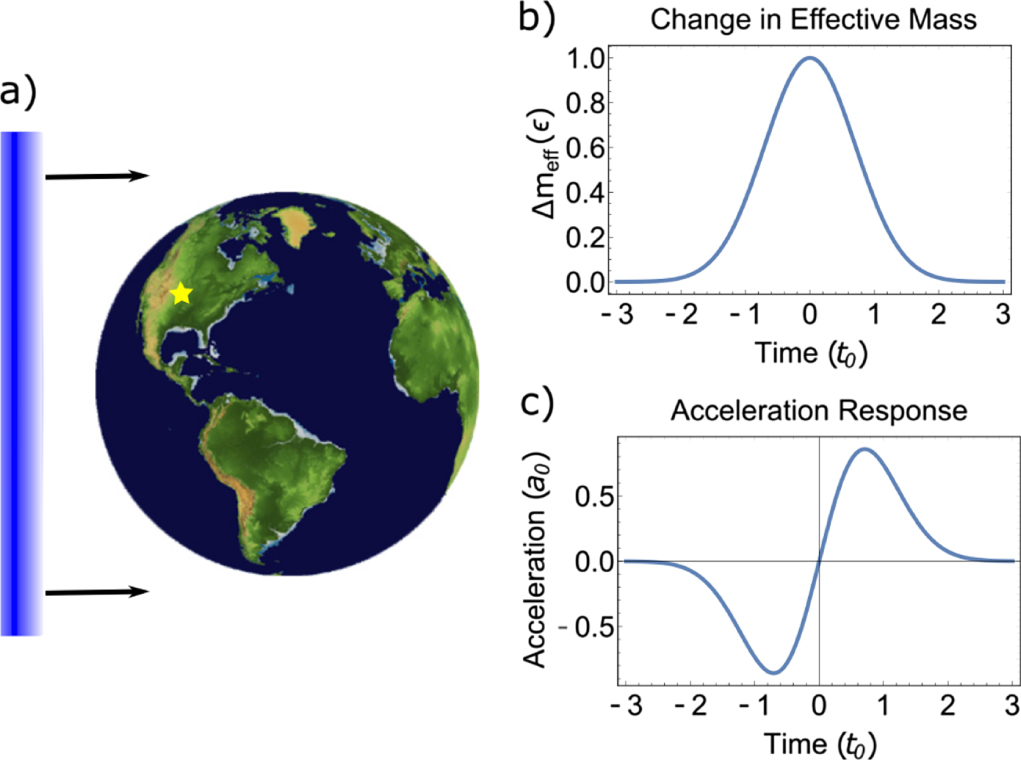
A new paper in EPJ D, ‘Constraining domain wall dark matter with a network of superconducting gravimeters and LIGO’, suggests two novel methods of searching for dark matter by measuring tiny perturbations in fundamental constants.
Dark matter, which cannot be physically observed with ordinary instruments, is thought to account for well over half the matter in the Universe, but its properties are still mysterious. One commonly held theory states that it exists as ‘clumps’ of extremely light particles. When the earth passes through such a clump, the fundamental properties of matter are altered in ways that can be detected if instruments are sensitive enough. Physicists Rees McNally and Tanya Zelevinsky from Columbia University, New York, USA, have now published a paper in EPJ D proposing two new methods of looking for such perturbations and, thus, dark matter. This paper is part of the EPJD Topical Issue on Quantum Technologies for Gravitational Physics which is still open to submissions.
EPJ C - New Deputy Editor-in-Chief for Theoretical Physics II
- Details
- Published on 01 April 2020
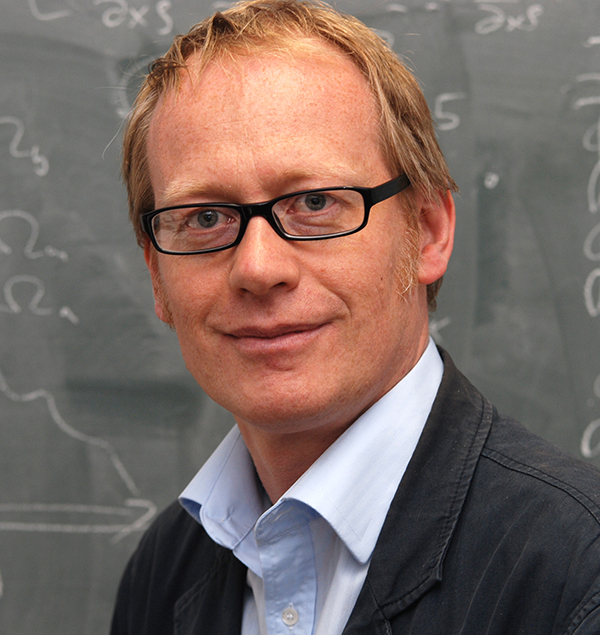
The publishers of The European Physical Journal C - Particles and Fields (EPJ C) are pleased to announce the appointment of Professor Dominik Schwarz as Deputy Editor-in-Chief for Theoretical Physics II: Gravitation, Astroparticle Physics and Cosmology, General Aspects of Quantum Field Theories, and Alternatives. He will relieve Professor Kostas Skenderis from submissions in the fields of astroparticle physics and cosmology, serving more and more as connecting elements between the phenomenology of the standard model and more elaborate mathematical theories including gravitation.
Dominik Schwarz, head of the Astroparticle Physics and Cosmology Working Group at Bielefeld University, is an expert on the interface of particle physics with cosmology as well as the interface between modelling and observational cosmology. His research interests include cosmological inflation and the thermal history of the Universe, the cosmic microwave background and large scale structure, dark matter and dark energy.
EPJ Plus Highlight - Models explain changes in cooking meat
- Details
- Published on 01 April 2020
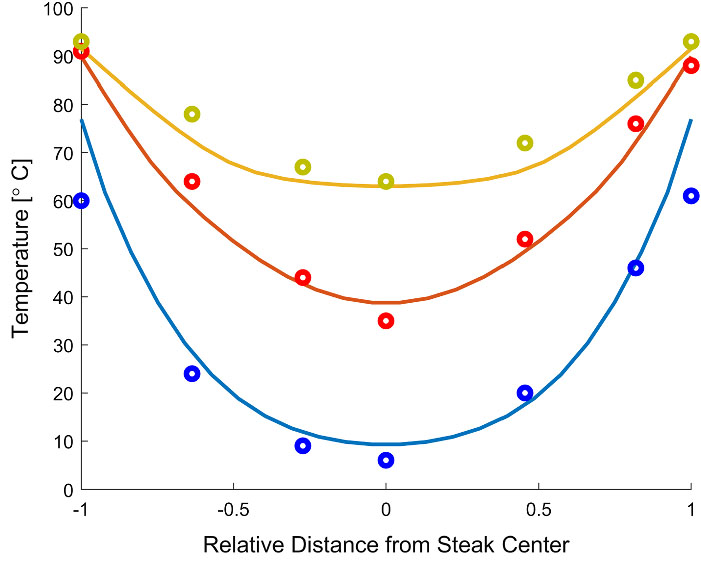
By treating meat as a network of flexible polymers surrounded by flowing moisture, computer models can accurately predict how much it will shrink when cooked.
Meat is no ordinary solid. Made up of complex networks of moisture-saturated proteins, it displays some intriguing physical properties when it is cooked. Several studies in the past have attempted to recreate this behaviour in computer simulations, but because this demands so much computing power, they have only achieved simplified, one-dimensional recreations of the process, which aren’t particularly accurate. In new research published in EPJ Plus, mathematicians led by Dr Hala Nelson at James Madison University show that by modelling meat as a fluid-saturated matrix of elastic proteins, which are deformed as the fluid moves, cooking behaviours can be simulated more precisely.




